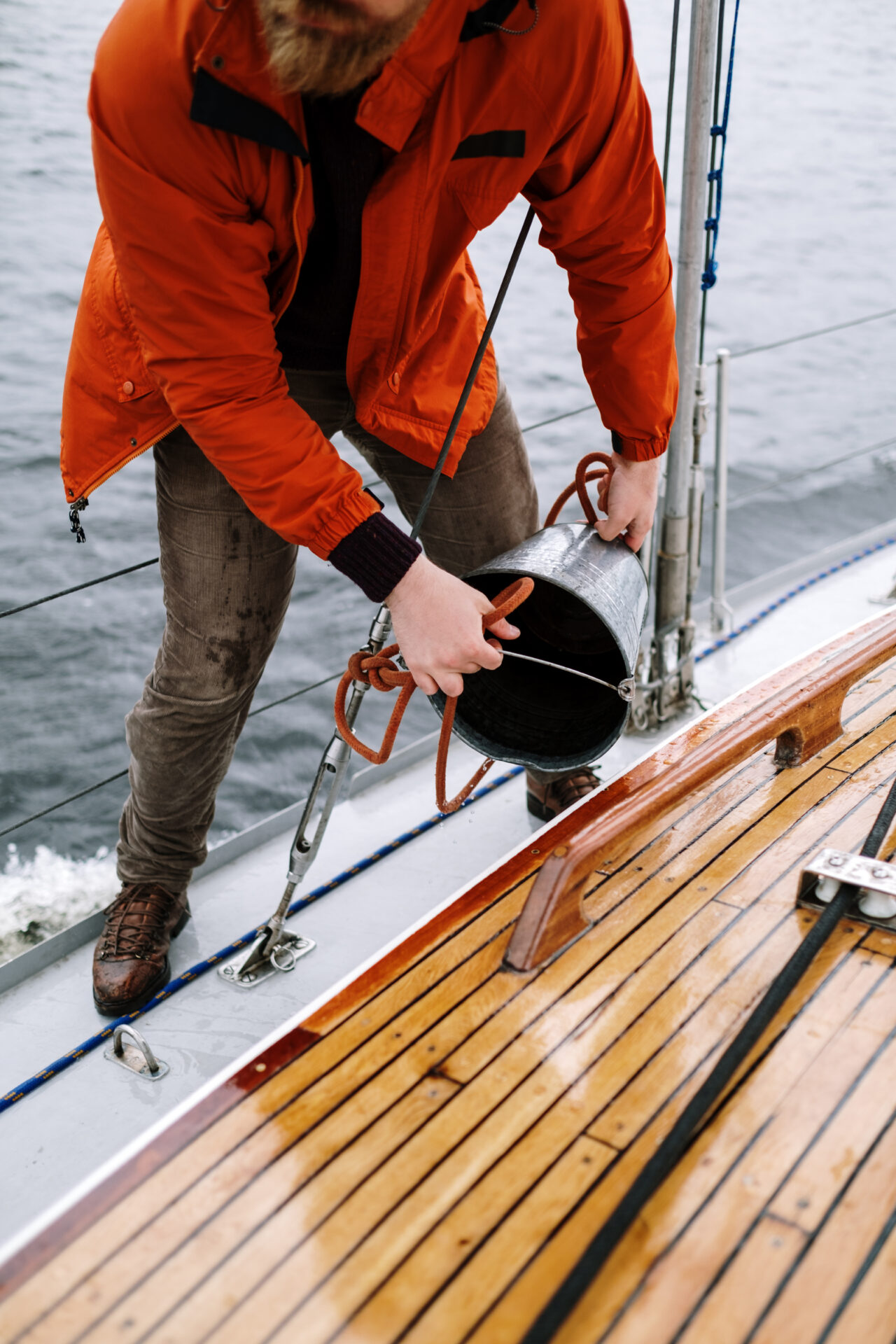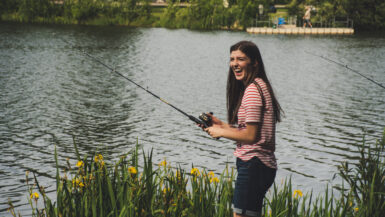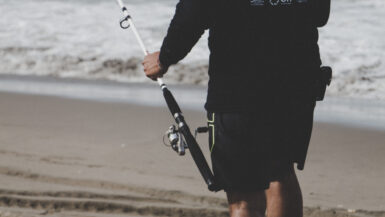Fishing is a popular pastime that allows people to relax and enjoy nature. Many fishermen have their own favorite spots they like to fish, but if you’re looking to do some exploratory fishing, it’s important to know how to read the water. Knowing how to identify the best fishing spots can save time and energy when out in the open water, and could lead to much more successful catches. In this article, we’ll explore how to read the water for finding the best fishing spots.
Factors to Consider When Reading the Water
When you are looking to read the water for the best fishing spots, one of the most important things you need to consider is the current. Understanding the current in a lake, river or stream can help you find where the fish are hiding. Look for places where the water is moving faster or slower than the surrounding area. Look for spots where there is an eddy, a backflow or a current break. All these places can be potential fishing spots.
Observe the Water Temperature
The water temperature is an important factor when looking for good fishing spots. Cold-water fish such as trout and salmon prefer colder water temperatures so look for spots in the lake or stream where the water is colder than the surrounding area. Warmer water is often preferred by fish such as bass and walleye so the best spots might be where the water is a bit warmer than the surrounding area.
Scan for Cover
Fish often hide in places that provide cover. Look for areas such as fallen trees, weed beds or rocks as these areas provide them with a safe place to hide and hunt for food. These areas can be great fishing spots as the fish will be there waiting for food to come by.
Look for Shallow Spots
When looking for a fishing spot, look for shallow areas as these areas can be great places for fish to feed. Look for shallow areas with rocks or other cover for the fish to hide in. Also look for areas that are adjacent to deeper areas as fish tend to congregate in these areas as well.
Scan for Natural Food Sources
Fish need food to survive so look for spots in the water where natural food sources can be found. Look for areas where there is a large concentration of small baitfish such as minnows or even insects. These areas can be great fishing spots as the fish will be there looking for food.
Identifying Movement
The first step in understanding how to read the water for finding the best fishing spots is to identify the various sources of movement in the water. Oftentimes, areas where large bodies of water meet, like streams or rivers merging with lakes, can create a great source of movement for fish. In other cases, shallow areas with large rocks can cause waves or eddies that will attract fish. Additionally, areas of shallow water with a drop-off that leads into deeper water will also usually be good fishing spots.
Recognize the Movement of Fish
Once you have identified potential sources of movement, the next step in reading the water for finding the best fishing spots involves recognizing the movement of fish. Different types of fish will react to the sources of movement differently, so it is important to be aware of the type of fish that you are looking to find. If you are looking for trout, try to look for areas where there is a slow, steady flow of water that won’t disrupt their feeding habits. On the other hand, bass will typically hang around areas with fast-moving currents.
Look for Fish Feeding Grounds
When you’re reading the water for finding the best fishing spots, it can also be useful to look for areas where fish tend to feed. In many cases, the movement of water brings in small aquatic insects that fish feed on. As such, these areas may be great spots for fishing. Additionally, areas where there are aquatic plants, such as lily pads, can also attract fish.
Be Conscious of the Weather
Finally, it is important to be conscious of the weather when reading the water for finding the best fishing spots. In many cases, the weather can have a big impact on the movement of water and the behavior of fish. For instance, on a windy day, the water can become choppy and fish may become spooked. On the other hand, on a calm day, the water can become more still, causing fish to be more active and open to feeding.
Seeking Out Deep Water
Fishing in deeper waters offers anglers the chance to catch different species of fish they wouldn’t be able to find in shallow water. Deep water fishing spots can be hard to come by, so anglers should have a few tricks up their sleeve in order to spot these hotspots.
Using Navigation Aids
The best way to find out which areas are deepest is to use navigation aids. A depth finder or a GPS can help you determine where the deepest waters in a given area are. Look for any drops, holes, or deep channels which are indicative of deeper water. Once you’ve pinpointed an area, you can start looking for fish.
Understanding Bottom Structures
Underwater structures such as rocks and weeds can be excellent places to find deep water fishing spots. Points and drop offs are also ideal locations, as fish tend to congregate in areas where there is a sharp decline in water depth. It’s also important to look for vegetation, as this can attract fish and make them more likely to bite.
Choosing the Right Bait
Once you’ve located a deep water fishing spot, it’s important to have the right bait on hand. Bait fish, jigs, and lures that are designed to sink quickly are great choices for deeper waters, as the bait will reach the desired depth before the fish can detect it. Live bait is also effective, as the scent will carry further underwater and attract the fish.
Reading the Weather
The weather also plays an important role when it comes to finding deep water fishing spots. During a storm, deep waters will be disturbed and may draw in fish from all around. Before planning a fishing trip, it’s important to check the forecast to see if there is an incoming storm that could spike your chances of finding a successful spot.
Reaping the Rewards
When seeking out deep water fishing spots, it’s essential to have patience and be observant. Once you have identified an area of deep water that holds promise, it’s time to cast your line and see what you can reel in. With the right knowledge and equipment, you can find those deep water hotspots and enjoy a great day of fishing.
Locating Structure and Cover
When it comes to locating the best fishing spots, the first step is to identify bodies of water that hold fish. Look for areas with ample aquatic vegetation, as these provide food and shelter for the fish. Be on the lookout for lily pads, weeds and other vegetation, as they can be a sign of a good fishing spot. Deeper and slower-moving waters are also often a good bet as they provide a place for fish to feed and rest.
Recognizing Fish Cover and Structure
Once you have identified a body of water that holds fish, the next step is to determine where in the water the fish may be located. Knowing how to read the water for the structure and cover that fish prefer can help you pinpoint their exact whereabouts.
Fish like to have places in the water where they can find food, hide from predators and relax, so look for structure that provides these things. Examples of structure include submerged logs, stumps and rocks, as well as man-made structures like docks, piers and bridges. Also be on the lookout for aquatic vegetation as it provides great cover and a place for fish to hide.
Making Use of Your Findings
Now that you know where exactly the fish may be located, you can use this information to make the most of your fishing experience. Knowing where the structure and cover are situated allows you to cast your line in more strategic spots, increasing the likelihood of a successful catch. Additionally, you can adjust your tackle to best suit the cover and structure in that particular area, giving you even greater success.
Using Other Clues to Find Good Fishing Spots
In addition to looking for structure and cover when trying to find the best fishing spots, there are many other clues that can help you pinpoint a great location. Pay attention to the natural environment, including the time of day, the weather, the activities of the wildlife and even the inclination of the shoreline. All of these things can help you better understand the habits of the fish and can inform where you choose to cast your line.
Reading the Bottom
Reading the bottom of a body of water is one of the more important aspects of finding the best fishing spots. The bottom structure gives clues to the types of fish species that inhabit the area and can provide valuable insight when making the decision of where to fish. Bottom structure refers to the type of material located at the bottom of a water body, ranging from sand, silt, clay, and rocks, to aquatic vegetation and other organic material.
Evaluating Bottom Structure
When evaluating the bottom structure of a body of water, the first thing to take into consideration is the type of material located at the bottom. Different types of material provide different benefits for different fish species and the ability to target a specific species can be determined by evaluating the bottom structure. Sandy bottoms provide ideal habitat for species that prefer soft substrate while rocky bottoms provide more stability and support for species that like to hide behind rocks.
How to Read the Bottom Structure
In order to effectively read the bottom structure, it is important to have a good understanding of the aquatic environment. Visually scanning the water can provide valuable insight into the bottom structure and can help anglers select the areas where they are most likely to find the species they are targeting. It is also important to use a depth finder or fish finder to get a better understanding of the bottom structure. A depth finder can provide a detailed reading of the depth of the water and the bottom structure, allowing anglers to identify holes, rocky ledges, points, weeds and other features that can provide excellent habitat for a variety of fish species.
Using Bottom Structure to Locate Fish
Once an angler has evaluated the bottom structure and identified potential areas of interest, the next step is to use the bottom structure to locate fish. Fish tend to gravitate towards areas of the lake that provide cover and food sources, so it is important to look for areas where fish can find shelter and forage for food. Knowing the type of bottom structure can help an angler identify potential areas of interest, as certain species of fish prefer certain types of bottom structure.
Identifying Inhabitants of the Bottom
Once the areas of interest have been identified, the next step is to identify the inhabitants of the bottom. There are a variety of fish species that inhabit different types of bottom structure, so it is important to have a good understanding of the species present in the area. By understanding the type of bottom structure, an angler can make an educated guess as to which species might be present. Additionally, an angler can use a fish finder to locate the fish that are present in the area.
Conclusion
Reading the bottom of a body of water is essential for finding the best fishing spots. Evaluating the bottom structure, using a depth finder, and understanding the fish species that inhabit the area can help anglers find productive waters and target specific species. By taking the time to read the bottom structure and understand the aquatic environment, anglers can be more successful when fishing.
Locate Feeding and Breeding Areas
Understanding the feeding and breeding habits of fish can help you better assess their locations and movements in the water. Depending on the species of fish you’re after, their breeding habits can dictate the types of habitats they prefer. For example, some species may prefer shallow waters and calmer waters for mating and nesting, while others prefer deeper and more turbulent waters. Consider the preferred environment of the species you are targeting when researching water and determining the best fishing spot.
Look for Signs of Activity
Once you have researched various fish species and the environment they prefer, it is time to look for signs of activity. The presence of aquatic plants, logs, and rocks can indicate an area with a higher chance of fish activity. Look for areas where there is a lot of surface activity and food. These areas are often hotspots for fish looking for food.
Investigate the Water Temperature
Water temperature also plays an important role in determining where fish will feed and breed. Fish that prefer colder waters will typically be found in deeper areas of the lake or river. In addition, the temperature of the water can also impact the activity level of the fish. Cooler water temperatures often result in less activity, making it harder to locate them.
Choose the Right Spot
Once you have an idea of where the fish may be located, you can use your rod and reel to determine the best spot. Cast your lure and observe the water flow, paying attention to areas with ripples or where the water appears to be eddying. Areas where there is a lot of activity can indicate fish are nearby.
Conclusion
By researching fish breeding habits, looking for signs of activity, and investigating the water temperature, you can gain a better understanding of where the fish might be located. With this knowledge, you can choose the right spot to make a successful catch. If done correctly, the tips mentioned above can help you better determine the best fishing spots.
Expert Fishing Tips to Help You Score Big
Reading the water can be a great way to find the best fishing spots, so that you can increase your chances of scoring some great catches. When looking for the best spot, it’s important to check for deeper sections of the water, areas where the bottom has a large rock or boulder, or areas with a good amount of structure. Additionally, look for spots where the water flows over a shallow, rocky ridge with a deep pool below it. These can be excellent spots for a variety of fish. Other keys to finding the best spot include paying attention to the clarity of the water and its temperature, the presence of weeds, and the type of shoreline. By combining these factors and reading the water, youcan locate areas that are likely to be good spots for fishing.





Leave a reply